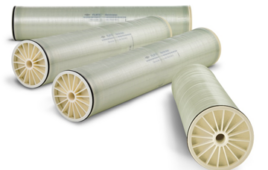Edge of the Filchner-Ronne Ice Shelf in the Weddell Sea, Photo: Ralph Timmermann, Alfred Wegener Institute |
The
results of the climate modelers from the Alfred Wegener Institute will
come as a surprise to the professional world with the majority of
experts assuming that the consequences of global warming for Antarctica
would be noticeable primarily in the Amundsen Sea and therefore in the
western part of Antarctica.
“The
Weddell Sea was not really on the screen because we all thought that
unlike the Amundsen Sea its warm waters would not be able to reach the
ice shelves. But we found a mechanism which drives warm water towards
the coast with an enormous impact on the Fichner-Ronne Ice Shelf in the
coming decades“, says Dr. Hartmut Hellmer, oceanographer at the Alfred
Wegener Institute and lead author of the study.
Using
different model calculations, he and his colleagues Dr. Frank Kauker,
Dr. Ralph Timmermann and Dr. Jürgen Determann as well as Dr. Jamie Rae
from Met Office Hadley Centre, U.K., demonstrate that as a result of a
chain reaction large ice masses could presumably slide into the ocean
within the next six decades.
This chain reaction is triggered by rising air temperatures above the southeastern Weddell Sea.
“Our
models show that the warmer air will lead to the currently solid sea
ice in the southern Weddell Sea becoming thinner and therefore more
fragile and mobile in a few decades“, says Frank Kauker. If this
happens, fundamental transport processes will change.
“This
will mean that a hydrographic front in the southern Weddell Sea will
disappear which has so far prevented warm water from getting under the
ice shelf. According to our calculations, this protective barrier will
disintegrate by the end of this century,“ explains Hellmer.
An inflow of warmer water beneath the Filchner-Ronne Ice Shelf will melt the ice from below.
“We
expect the greatest melting rates near the so-called grounding line,
the zone in which the ice shelf settles on the sea floor at the
transition to the glacier. At this point the Filchner-Ronne Ice Shelf is
melting today at a rate of around 5 m per year. By the turn of the next
century the melt rates will rise to up to 50 m per year,“ says
Hellmer’s colleague Jürgen Determann.
How
the ice streams behind will react in the event of a melt of such
enormous proportions is currently being investigated by Jürgen
Determann. One thing is obvious, however: “Ice shelves are like corks in
the bottles for the ice streams behind them. They reduce the ice flow
because they lodge in bays everywhere and rest on islands. If, however,
the ice shelves melt from below, they become so thin that the dragging
surfaces become smaller and the ice behind them starts to move“,
explains Hellmer.
“If
the high melting rates are completely compensated by inland ice flow,
this loss in mass would correspond to an additional rise in global sea
level of 4.4 mm per year,” adds Jürgen Determann. According to the
latest estimates based on remote sensing data, global sea level rose for
the period 2003-2010 at a rate of 1.5 mm per year due to melting of
glaciers and ice shelves. This occurs in addition to the 1.7 mm per year
due to thermal expansion of the oceans.
The
forecasts of the current study are based on independent calculations of
the ocean models BRIOS (Bremerhaven Regional Ice Ocean Simulations) and
FESOM (Finite Element Sea Ice Ocean Model). The scientists used the
atmospheric projections of the British Met Office Hadley Centre in
Exeter as forcing data. These included, for example, information on the
future development of the wind and of the temperature in Antarctica.
|
Hellmer
and his colleagues have thoroughly checked the model results for being
realistic: “We started the BRIOS model in 1860 to see whether its
results also represent the current situation. We found that this
condition was satisfied. For example, the water temperatures for the
Weddell Sea predicted by BRIOS are close to those we have actually
measured in the recent past,“ says Ralph Timmermann, who adds, “The
BRIOS model has been verified on many occasions in the past. It
correctly predicts sea ice thickness, concentration, and drift as well
as circulation patterns. And FESOM is well on the way to attaining BRIOS
status. However, it has a far higher resolution, which is why we have
to wait a long time until the computer has calculated several decades
and more. BRIOS only needs less than a week for a century.“
The
study was conducted as part of the EU-funded research programme
“Ice2sea“. This project brings together scientists from 24 leading
research institutions of the European Union and from Chile, Norway and
Iceland. Together, the scientists aim for decoding the interactions
between ice and climate and in this way facilitate more precise
predictions about the effects of melting ice on sea level.
Twenty-first-century warming of a large Antarctic ice shelf cavity by a redirected coastal current.
Source: Alfred Wegener Institute







